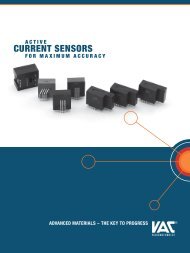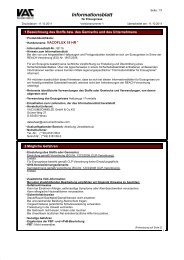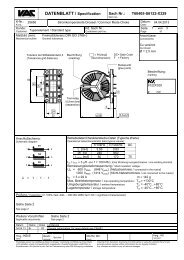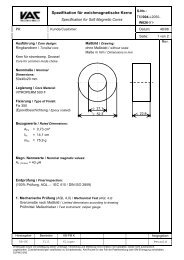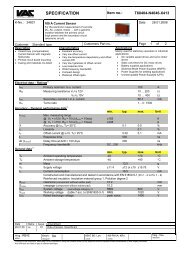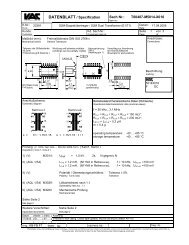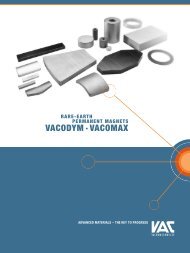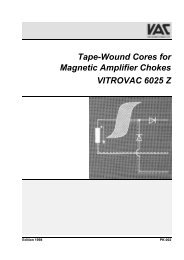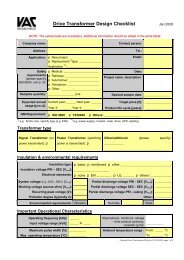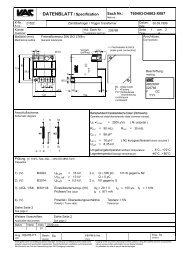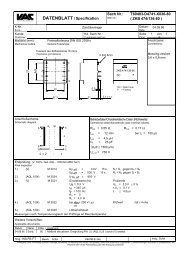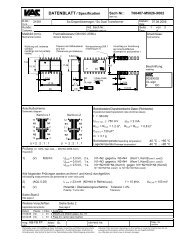PROPERTIES AND APPLICATIONS OF HIGH ... - Vacuumschmelze
PROPERTIES AND APPLICATIONS OF HIGH ... - Vacuumschmelze
PROPERTIES AND APPLICATIONS OF HIGH ... - Vacuumschmelze
Create successful ePaper yourself
Turn your PDF publications into a flip-book with our unique Google optimized e-Paper software.
permanent magnets increases proportional to the Curie temperature of the magnet materials, see<br />
Fig. 1.<br />
max. operating temperature in °C<br />
600<br />
500<br />
400<br />
300<br />
200<br />
100<br />
0<br />
Hard Ferrites<br />
(Nd,Dy) 2Fe 14B<br />
Sm 2(Co, Cu,Fe,Zr) 17<br />
SmCo 5<br />
AlNiCo<br />
0 200 400 600 800 1000<br />
Curie temperature in °C<br />
Figure 1: Maximum operating temperatures of permanent magnets in dependence on their Curie temperatures. The shaded<br />
lines give the lowest or the highest operating temperatures for different permanent magnet materials, respectively.<br />
Most of the RE magnets are produced by powder metallurgy in many different grades and shapes.<br />
The alloys are melted from RE metals, Fe and Fe-B master-alloys in vacuum-induction furnaces. The<br />
polycrystalline microstructure of the ingots implies, that the magnetic moments are distributed randomly.<br />
In order to achieve a well defined texture, powder metallurgy is applied. The alloys are crushed<br />
and milled to a fine alloy powder, that must consist of single crystals. In general alloy powders<br />
with an average particle size in the range 3 to 5 µm meet this requirement very well. Such alloy<br />
powders can be aligned by a magnetic field, compacted by cold isostatic pressing (CIP) to blocks, by<br />
axial (AP) or transverse (TP) field die-pressing to net-shape parts and sintered to compact anisotropic<br />
magnet materials [1 - 3].<br />
For many applications the maximum energy density is decisive. At room temperature Nd-Fe-B as<br />
well as Nd-Dy-Fe-TM-B magnets with strong coercivities HcJ >24 kA/cm, TM: transition metals,<br />
have got higher maximum energy densities than SmCo5 or Sm2(Co,Cu,Fe,Zr)17 magnets, see Fig. 2.<br />
But at temperatures of approximately 120 °C sintered Sm2(Co,Cu,Fe,Zr)17 magnets are superior.



